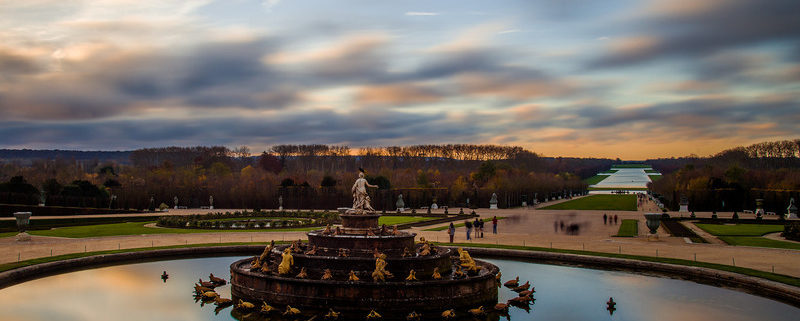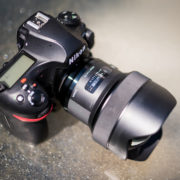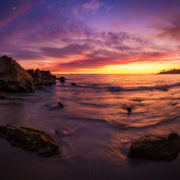5 Great Photography Uses for Neutral Density Filters
In the digital age, there are few filters for photography that can’t be replicated in post-processing. Neutral density filters are one such filter, and while they are commonly used to allow using a wide-open aperture in bright sunlight, I prefer using them on a tripod to take longer exposures, for the purposes of playing with motion and light.
Here are my five favorite uses for ND filters:
Water
I know that in a recent blog post I suggested that photographers should think outside the box and not just photograph waterfalls with neutral density filters. While I still feel this way, I also think taking photos of water with neutral density filters is a good idea. Whether it be waterfalls, rivers, or other water, neutral density filters give water a silky look that will turn even the most raging waters a placid feel.
Removing People
People can add a lot to photos, but when your focus is architecture, that disheveled tourist may not be what you’re looking for in your photo. I’ve found that a good solution to this problem for daytime shots is to use an intense neutral density filter, with an exposure of about 30 seconds. As people move through the frame, they will “ghost” out. In order for this to work, people have to be moving, so it might take a few tries to get everyone out of it. (In the process, you might notice just how many people stand around looking “lost” in any one scene.)
This is not recommended for night photos as you can easily achieve 20-30 second photos without a neutral density filter, and increasing your exposure time above that doesn’t do a whole lot. If someone is standing around looking lost in a 30 second exposure, chances are that they’ll be there in the 60 second exposure.The photo above from a busy train station also shows streaked traffic (another great use), but also demonstrates one thing to be careful of when using a neutral density filter: partly cloudy skies that become almost entirely overcast due to cloud movement.
Fireworks
I normally do not recommend using neutral density filters at night, but fireworks are an exception because they are so bright. Here, a little intensity goes a long way, with a 3 to 5 stop filter being about what you “need.” I regularly use my 10-stop filter for fireworks, but I use an almost wide open aperture to compensate, and even then, some of my exposure times exceed 4 minutes!
Trees
Long exposures of trees don’t get enough attention–I see barely any photos like this, in fact. It’s probably because the concept is counter-intuitive, but this is nothing like “photographing the grass grow.” Trees move, especially if there’s a breeze, and their motion can have an almost ethereal look.
Because trees don’t move a ton in normal conditions, you will probably need a strong ND filter, and a shutter speed of over 30 seconds (most of mine exceed 60 seconds). If you’ve never taken a long exposure photo of trees, go do it!
Streaking Clouds
It takes a lot of extra effort to set up the tripod and shoot a 30 second exposure in broad daylight, but I love the look of clouds streaking through a photo. I like nice, puffy clouds in normal exposures, too, but I think the streaking clouds give a certain sense of drama and motion to a photo that can make shots particularly eye-grabbing. The photo above isn’t the greatest example, but I like it because it incorporates a few of the above uses and ties things together well.
Which Filter?
For all of these except fireworks, I think your best bet is a fairly intense filter. My personal preference is the Hoya ND400 10-stop Neutral Density Filter, which I think is a great mix of value (it’s still expensive, but not by high-quality ND filter standards), intensity, and quality. This is the filter I use 80% of the time, and it allows me to achieve 30 second exposure without using a really small aperture. Every photo above except the fireworks photo was taken with this filter.
The other 20% of the time, I use what I’ve dubbed the “CHEAP-O” Vari-ND Filter. I think this exact filter goes by numerous brandings, so I just call it the CHEAP-O because…it’s cheap. It’s cheap both in terms of price and quality, and I only use it for fireworks due to color cast. For fireworks, it allows me to adjust the intensity, and I’ve never really had a problem with color cast or image degradation. The fireworks photo above was taken with this filter.
On my Disney blog, I have a full write-up with reviews of neutral density filters I’ve used, but these are the two currently in my camera bag.
Your Thoughts…
Do you have any clever uses for neutral density filters? (If so, please share links to sample photos in the comments!) What do you think of these spots? Let’s hear from you in the comments!
















Could you tell me please this filter is same as this link please? http://www.daganet.cz/nd400/1004-hoya-filtr-hmc-ndx400-58mm.html
And it is variable? Thnak you
There is a way to remove the streaked traffic in your Removing People tip. Use ‘median blending’ on multiple exposures. Night sky photographers use it to reduce noise. Streaked traffic is just another type of noise as far as the technique is concerned. Pat David wrote a good intro piece at http://petapixel.com/2013/05/29/a-look-at-reducing-noise-in-photographs-using-median-blending/
Interesting, thanks! Personally, I like streaked traffic, but it’s nice to know there’s a way to eliminate it if need be.
Utilizing our own agario rate hack carry out anybody can very easily
improve their pace even as soon as they very large and switching extremely gradually.
This is excellent advice
Small point, but the Hoya ND400 is a 9 stop filter. A 10 stop will almost double the exposure time in low light conditions. I only know that because I just bought my first ND filter and did a lot of research. I did actually get the Hoya ND40.
Thanks for the ideas. With the 4th of July coming up i was going to try it with the fireworks but wasn’t sure if it would work. Now I know!
When it comes to removing people from photos, what ND filter do you typically resort to? the big stopper (10 stop) or the cheap-o- variable?
Going on vacation next month and will likely want to remove tourists my from my shots… trying to figure out the best way to do this without lugging around 20 different filters 🙂
If it’s daytime, I would definitely recommend using something nicer. The variable ND filters are fine for fireworks, but in daylight, their flaws really start to show.
At night, I just use a longer exposure (30 seconds should do the trick).
Tom:
I greatly admire your photography skills, and beautiful shots at WDW. I’ll be heading there next week with the family and will somehow try to balance a vacation with my desire to shoot memorable shots from the four parks. My arsenal includes the d800 and d300 Nikons with 24-70mm 2.8, 50mm 1.4g and the 70-200 2.8VR. I have shot fireworks locally without ND filters, but greatly admire what you’ve captured at night. Any advice you can offer for an ideal setting that will capture the fireworks with a ND filter applied? Thank you for your assistance.
There really is no one size fits all setting. You’ll want to use bulb mode and a remote, but the aperture and shutter speed will vary based upon the intensity of the ND filter and your preferences based on number of bursts.
I could write a full blog post about the possibilities…and maybe I should!
Excellent advice. Is this why so many of your nighttime Disney shots have no people in them? I’ve wondered for years if you worked there.
I don’t work there. Night is sort of a “natural” neutral density filter because of the darkness. Same idea, using a 30 second exposure so the people disappear from the shot as long as they’re moving. If you used a neutral density filter at night, your exposure times would be really long (a few minutes, possibly). No filter at night.
Thanks for the tutorial. I would not have thought about using it to remove people from a picture, but that is a nice application.
Yeah, same idea as a long exposure at night, except at night, the filter isn’t necessary.